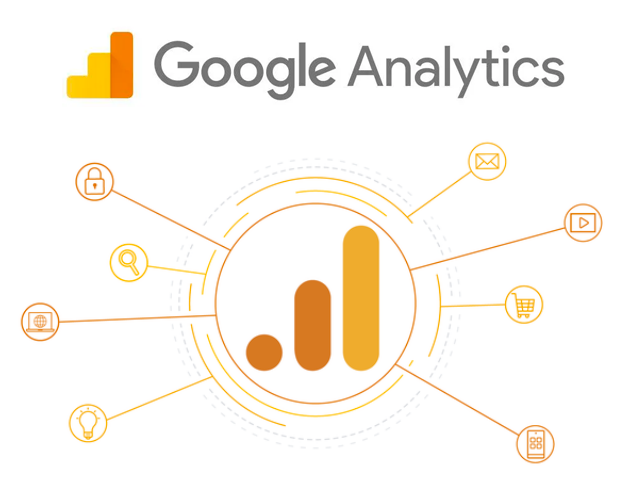Enhance Your SEO Approach With Effective Google Analytics Tracking Code
Integrating Google Analytics tracking code right into your Search engine optimization strategy is a critical step towards accomplishing quantifiable outcomes. What details strategies can you adopt to optimize the effect of this information on your SEO efforts?

Understanding Google Analytics Essentials
To successfully take advantage of Google Analytics for Search Engine Optimization, it is necessary to understand its fundamental ideas. Google Analytics works as an effective tool for monitoring and analyzing internet site traffic, giving insights that are essential for maximizing online search engine efficiency. At its core, the system allows customers to monitor customer behavior, website traffic sources, and crucial efficiency indicators (KPIs) such as bounce prices and session durations.
Knowledge with the user interface is crucial. Trick sections include the Target market, Acquisition, and Habits tabs, each supplying important information. The Target market section offers demographic understandings, helping to tailor web content to target users efficiently. The Acquisition tab reveals how site visitors get here at the site, whether with natural search, paid advertisements, or social networks, leading tactical adjustments in advertising initiatives.
Understanding metrics such as organic traffic volumes and conversion rates is important for examining search engine optimization performance. Inevitably, understanding these essentials allows electronic online marketers to harness the full possibility of Google Analytics, driving informed choices that boost total search engine optimization approaches. By developing a strong structure, services can successfully examine their performance and identify opportunities for renovation in their online presence.
Establishing Monitoring Code
Appropriately setting up the tracking code is crucial for exact information collection in Google Analytics. The primary step involves developing a Google Analytics account and property, where you will certainly receive an one-of-a-kind monitoring ID. This ID is vital for linking your website's information to your Google Analytics account.
When you have your monitoring ID, incorporate the tracking code snippet right into your site's HTML. This is generally placed in the header area of each web page to ensure it lots early in the page rendering procedure. If you're using a Web content Management System (CMS) like WordPress, several plugins simplify this process, permitting you to add the monitoring code without direct HTML editing.
After executing the monitoring code, it is crucial to test its performance. If the tracking code is properly installed and operating, you can make use of the Google Tag Aide device to confirm. In addition, keep track of the real-time coverage feature in Google Analytics to confirm that data is being collected correctly.
Guaranteeing that the tracking code is appropriately established lays the structure for effective data evaluation, allowing you to make informed decisions to boost your search engine optimization approach and overall web site efficiency.
Trick Metrics to Monitor
Determining vital metrics to keep an eye on is essential for comprehending the efficiency of your search engine optimization approach through Google Analytics. By focusing on certain information points, you can evaluate the effect of your optimization initiatives and make educated choices to improve efficiency.
Among the main metrics to track is natural website traffic, which shows the variety of site visitors arriving at your website through internet search engine. This statistics mirrors the overall health of your search engine optimization strategy. Next, keep track of the bounce rate, which try this web-site shows the percentage of visitors who leave your site after checking out just one page. A high bounce rate may signal that your content is not meeting customer expectations or that your touchdown web pages require renovation.
Furthermore, think about tracking conversion prices, as these metrics expose how well your site meets its organization goals, such as producing leads or sales. Search phrase positions are likewise essential; monitoring adjustments in keyword settings helps assess the effectiveness of your targeted search engine optimization initiatives. Finally, analyze the average session duration, which shows customer interaction and content importance. By closely adhering to these crucial metrics, you can acquire important insights right into your search engine optimization method's performance and recognize areas for renovation.
Analyzing Individual Actions
Recognizing user behavior is vital for improving your Search engine optimization strategy and taking full advantage of website efficiency. Google Analytics provides a wealth of data on customer engagement metrics, such as bounce rates, time on site, and page sights per session.
Additionally, tracking individual flow can expose typical navigation paths, highlighting possible traffic jams or locations for renovation. Recognizing the demographics, passions, and geographical places of your site visitors permits even more customized material that talks with their needs. Utilizing segmentation attributes in Google Analytics better enhances your capacity to analyze customer behavior by allowing you to contrast various audience groups.
Moreover, monitoring conversion prices and user actions can provide understandings right into the efficiency of your phone call to activity and overall website layout. This alternative view of customer habits is necessary for making notified decisions that boost user experience and drive greater involvement, eventually adding to improved search engine optimization performance.
Leveraging Insights for Search Engine Optimization
Continually leveraging understandings acquired from user habits analysis can significantly boost your SEO initiatives. By using Google Analytics, you can identify crucial metrics such as bounce prices, session duration, and customer flow, which disclose how site visitors communicate with your web content. These understandings allow you to determine areas requiring enhancement, such as high leave pages or underperforming key words.

Additionally, tracking organic traffic resources gives clearness on which channels are most effective, allowing you to allot sources purposefully (when does the google analytics tracking code send an event hit to analytics?). By assessing conversion prices alongside traffic see this site information, you can recognize which pages drive actual company results, improving your SEO strategy better
Integrating these insights right into your material method not only enhances presence but additionally promotes a more user-centric strategy. Eventually, a data-driven search engine optimization strategy notified by analytics not only increases positions yet also aligns your purposes with user assumptions, resulting in continual growth and involvement.
Final Thought
Efficient implementation of Google Analytics tracking code substantially enhances a SEO method by offering crucial insights right into customer behavior and web traffic resources. Monitoring essential metrics such as organic website traffic, bounce rates, and conversion rates assists in the recognition of improvement areas. Furthermore, examining user demographics and interaction metrics enables an extra targeted material approach. Ultimately, leveraging these insights adds to fine-tuning search engine optimization initiatives, driving more relevant traffic, and enhancing general web site efficiency.
Integrating Google Analytics tracking code into your SEO strategy is a pivotal action toward attaining measurable outcomes. At its core, the system allows individuals to keep track of user habits, web traffic sources, and key efficiency signs (KPIs) such as bounce rates and session durations.
Recognizing individual behavior is important for fine-tuning your SEO approach and maximizing website performance.Consistently leveraging understandings acquired from customer behavior analysis can significantly improve your SEO initiatives.Efficient implementation of Google Analytics tracking code substantially boosts a Search engine optimization technique by providing vital insights right into user actions and web traffic resources.